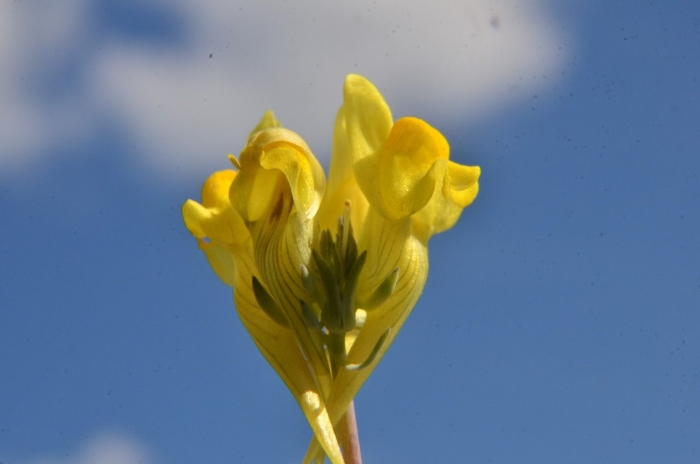Lesser Toadflax
(Linaria supina)
Lesser Toadflax (Linaria supina)
/
/

Carlos Villasante
CC BY-SA 4.0
Image By:
Carlos Villasante
Recorded By:
Copyright:
CC BY-SA 4.0
Copyright Notice:
Photo by: Carlos Villasante | License Type: CC BY-SA 4.0 | License URL: https://creativecommons.org/licenses/by-sa/4.0/ | Attribution: Carlos Villasante (cc-by-sa) | Rights Holder: Carlos Villasante | Publisher: PlantNet | Date Created: 2019-06-15T19:00:43Z | Title: Linaria supina (L.) Chaz.: flower | Notes: |
















































Estimated Native Range
Summary
Linaria supina, commonly known as Lesser Toadflax, is an annual herb native to open, rocky places, and grasslands in Southern Europe. It typically grows to a height and width of 1-2 feet (0.3-0.6 meters). Lesser Toadflax has a delicate appearance, with slender stems and narrow leaves. It produces small, snapdragon-like yellow flowers with orange beards from late spring to early autumn, which are moderately showy and attract pollinators.
Lesser Toadflax is valued for its ability to thrive in poor soils and its drought tolerance once established, making it suitable for rock gardens, wildflower meadows, and borders. It is also used for its ornamental flowers and as a filler plant in mixed plantings. This plant prefers well-drained soils and can tolerate a range of soil types, from sandy to loamy. While it does best in full sun or part shade, it is adaptable to less ideal conditions. Lesser Toadflax is generally low-maintenance but can be susceptible to rust and powdery mildew. It is not known to be invasive and does not typically present problems with aggressive roots or other cultivation issues.CC BY-SA 4.0
Lesser Toadflax is valued for its ability to thrive in poor soils and its drought tolerance once established, making it suitable for rock gardens, wildflower meadows, and borders. It is also used for its ornamental flowers and as a filler plant in mixed plantings. This plant prefers well-drained soils and can tolerate a range of soil types, from sandy to loamy. While it does best in full sun or part shade, it is adaptable to less ideal conditions. Lesser Toadflax is generally low-maintenance but can be susceptible to rust and powdery mildew. It is not known to be invasive and does not typically present problems with aggressive roots or other cultivation issues.CC BY-SA 4.0
Plant Description
- Plant Type: Herb
- Height: 1-2 feet
- Width: 1-2 feet
- Growth Rate: Moderate
- Flower Color: Yellow
- Flowering Season: Summer, Fall
- Leaf Retention:
Growth Requirements
- Sun: Full Sun, Part Shade
- Water: Medium
- Drainage: Medium
Common Uses
Bee Garden, Bird Garden, Butterfly Garden, Hummingbird Garden, Low Maintenance, Showy Flowers
Natural Habitat
Open, rocky places, and grasslands in Southern Europe
Other Names
Common Names: Prostrate Toadflax, Liggende Leeuwenbek, Bleksporre
Scientific Names: , Linaria supina, Linaria masedae, Linaria supina var. supina, Linaria supina subsp. masedae, Linaria supina var. pyrenaica, Linaria supina var. lineata, Antirrhinum simplex, Antirrhinum glaucum, Linaria supina var. ambigua
GBIF Accepted Name: Linaria supina (L.) Chaz.